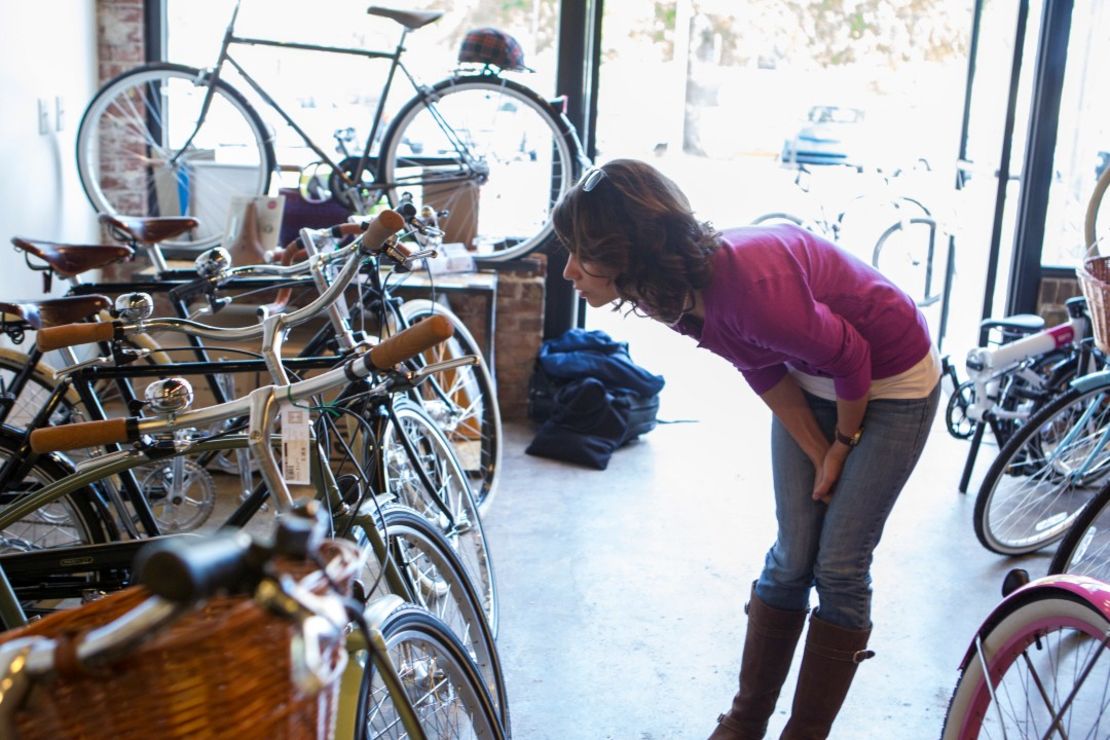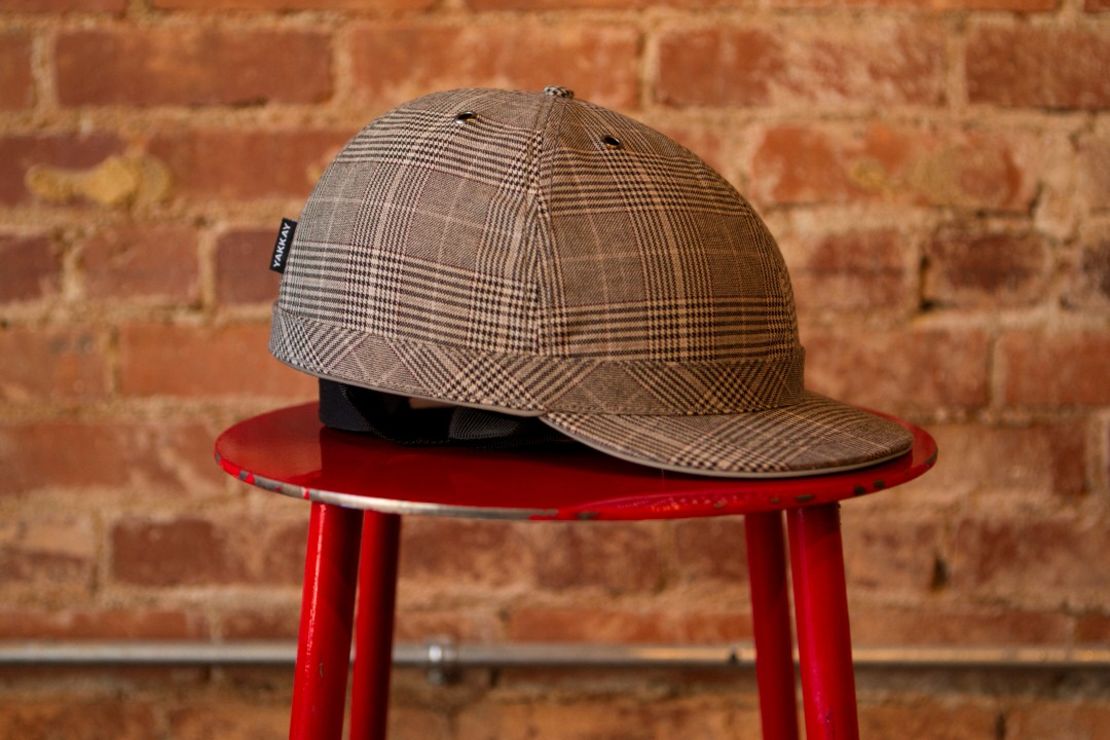Story highlights
Bike advocates leverage "cycle chic" style movement to make it more appealing to casual riders
Tweed rides and other style-focused events encourage tentative riders to get in saddle
Bicycle boutiques and coffee shops aim to become lifestyle brands
"It goes back to childhood, to riding for fun. ... No spandex or cleats," a recreational rider says
Laura Bellinger wishes she could bike around Atlanta more often. She’d even consider making the five-mile ride to work if she weren’t “a little chicken” when it comes to braving the city’s infamous rush-hour traffic without the protective shell of a car.
But she couldn’t resist an opportunity to bike for her first “tweed ride,” the dandy’s answer to critical mass, in which cyclists don vintage-inspired attire for a leisurely ride. Often the subject of fashion magazine spreads out of New York and London, it was the first-ever such ride in Decatur. The Atlanta suburb was recognized this year as one of the newest cities to make the League of American Bicyclists’ list of top bicycle-friendly communities for its network of bike paths and bicycle education programs in schools.
Bellinger dug up a pair of cropped riding pants, dark-patterned socks and a corduroy blazer, loaded her mother’s old white Cannondale into the car and headed to downtown Decatur, where a sea of cyclists dressed in autumnal shades gathered in the square Sunday afternoon.
“Events like this get me comfortable with the idea of riding more often because I can learn from others,” said Bellinger, a public relations specialist at the Centers for Disease Control and Prevention. “I totally love fashion and vintage, so dressing up just made it more fun.”
Drivers, cyclists square off on sharing the road
Style-themed bike rides are just one way in which advocacy groups are hoping to shed bicycling of its strict association with competitive racing and make it more appealing to casual riders and potential commuters in the United States, especially in communities such as Decatur making bike-friendly strides.
Bike stores are also showing up within those communities that look more like trendy boutiques than repair shops, with the goal of redefining urban bike culture. The target customers are new and aspiring cyclists, and commuters who might be turned off by the functional atmosphere of traditional bike shops. What they’ll find are upright and cruiser bikes in pink and green, helmets like equestrian caps, woven baskets, canvas and leather panniers and, literally, bells and whistles.
Even mass-market apparel brands such as Levi’s and Lands’ End Canvas are tapping into the niche with commuter-friendly lines of clothing and accessories that can be worn all day and athletic wear that emphasizes fashion as much as function.
It’s part of a larger movement often referred to as “Cycle Chic,” a phrase coined in the mid-2000s by Danish “bicycle ambassador” Mikael Colville-Andersen on his website, Copenhagenize.com, which highlights the Danish capital’s bicycle culture. Since then, “Cycle Chic” has grown into a global network of websites espousing the motto “dress for your destination, not your journey,” along with hundreds more online portals and periodicals focusing on fashion and lifestyle through the lens of the “slow bicycle movement.”
6 reasons to explore Copenhagen
“I really see fashion and style as key for bicycle advocacy,” Melissa Balmer, program director of bicycle advocacy group Women on Bikes SoCal, which aims to normalize cycling through style rides, bicycle fashion shows and food and wine bike tours.
With bicycles becoming a style darling in lifestyle magazines, from Vogue to Glamour, it’s the perfect time to spread the word on the benefits of biking, said Balmer, who has been car-free in Long Beach, California, for five years.
“I see the bike as a tool for urban optimism because nothing else deals so easily with two of our biggest challenges facing us as a nation: the down economy and the sedentary-disease pandemic.”
That’s where clothing, bicycles and accessories come into play to reflect the rider’s personality, just like a car, she said.

“You look at the bikes in beautiful colors – the baskets and panniers – people having fun in the same way they did as a child, and it reminds you of the joy of bicycling.”
Finding a comfortable upright bicycle helped Norma Palus return to a beloved childhood pastime. She ordered a teal Rivendell Bleriot from a supplier in California for both its “vintage throwback look and attitude toward riding,” the Decatur resident said.
“It’s just riding for pleasure instead of running the roads,” Palus said as she prepared to join the ride. “It goes back to childhood, to riding for fun, to enjoy it. No spandex or cleats.”
It’s not just an idea that appeals to women. About half the participants in Decatur’s Autumn Classic Ride were men who happily donned their finest Harris Tweed and argyle duds. Luckily, the mostly cloudy skies ensured it was never too warm for the army of riders in woolens and textured fabrics.
Chris Hunt chose an outfit of matching black vintage wool racing shorts and sweater emblazoned with the logo of Italian vermouth brand Cinzano in a nod to the days “when cyclists smoke and drank and still won,” the 51-year-old photographer said.
The four-mile tour, which included two stops along the way and lasted most of the afternoon, was a welcome reprieve for Hunt, a distance mountain biker.
“Cycling has gotten so serious and uncomfortable,” he said as he sipped an iced coffee during the first stop. “It’s inspiring to observe cycling as a nonhazardous sport, something that’s fun that anyone can do.”
To be sure, safety concerns – not clothing – are still the biggest barriers to getting more people to ride, said Atlanta Bicycle Coalition Executive Director Rebecca Serna, who attended the ride dressed in a white sweater and knee-length houndstooth skirt. She also brought along her 7-year-old son.
“People don’t realize that for kids and young adults, being in a car is the biggest cause of serious and deadly accidents,” said Serna, referring to studies showing that motor-vehicle traffic-related deaths are the biggest cause of unintentional deaths among those 19 and under.
“There needs to be a better understanding of what the real risks are and all the ways in which you make cycling safe.”
Still, seeing someone riding in a bike in a skirt and heels can make people think twice, she said, referring to the coalition’s monthly Heels on Wheels ride.
“It shows you can integrate biking with things you can ordinarily do, like go out and spend time with friends on a Sunday afternoon,” she said during a stop on the ride at a bar, which provided free Irish coffees for participants.
Though tweed rides are premised upon wearing special clothes, no spandex is required, which is what comes to mind when most people think of cycling, said Andy Clarke, president of the League of American Bicyclists, a nonprofit advocacy and education organization. That’s the perception cycling needs to overcome to appeal to Americans more interested in biking to run errands than to race 20 miles toward a finish line, he said.

“When you get into a car, you don’t have to remember to bring special tools or a change of clothes,” he said. “As we focus on the segment of the population for whom this is not already a lifestyle, we’re finding they want to be able to get onto a bike and not worry about a lot of special equipment or clothing.”
Though recent studies point to a growing interest in public transportation or car-free living, especially among young Americans, we still have a long way to go before most would consider hopping on a bike as feasible, he said.
“More people are going to ride when it’s the cheapest, quickest, most efficient way of getting around that doesn’t require special behavior.”
Many see getting more women on the road as key to fostering a bike-friendly culture. In response, bike stores are popping up across the country geared toward females, including South Carolina’s Pedal Chic, which was recognized this year as the best bike shop for women at Interbike, North America’s largest bicycle trade show.
The Greenville store’s motto, “Roadways are the new runway,” reflect owner Robin Bylenga’s view that women look good when they feel good, she said.
The fit and functionality are key to choosing the right outfit for cycling, and many women would rather talk to another woman to find the right pair of bicycle shorts or the most comfortable bike seat. A full-time female mechanic is also on hand to help customers with repairs.
But the sweet spot is fashion, she said.
“We’re about community and building camaraderie and demystifying cycling,” Bylenga said. “My customer would rather buy two fashionable jerseys than one highly technical, over-the-top, performance-enhanced jersey.”
Bylenga said she hopes eventually to add a coffee shop similar to Chicago’s Heritage Bicycles General Store, where a counter sign proclaims, “People demand bikes and coffee.” Visitors can order a pour-over coffee or browse helmets and rain capes in the back retail section while they wait for a bike tuneup. Custom vintage-style bikes are also made and sold onsite.
Owner Michael Salvatore said he prefers to stock unique and quality products such as fine leather saddles and handles and American-made cycling pants, for which customers pay a premium. Still, retail sales account for about 30% of the overall business, he said, with helmets the biggest sellers.
“We consider ourselves a lifestyle brand so we like to curate a collection of products that represents us and our customer,” he said. “People want to look good when they’re on a bike, and they cycle more when they feel like they don’t have to dress especially for cycling.”
Like Salvatore, Jae Schmidt opened Decatur’s Houndstooth Road to create the kind of store where he would want to shop: a bicycle boutique with an emphasis on classic vintage esthetic and craftsmanship.
The health care administrator opened his store this summer after years of selling premium bicycle parts and accessories in his free time. He is still one of few vendors in the Southeast for offbeat items such as sequined reflective vests and handcrafted wicker baskets from a women’s co-op in Ghana.
He also organizes events such as Decatur’s Autumn Classic Ride. It’s all about creating a lifestyle around style and cycling, two things he loves.
“It brings you back to the joy of cycling while making it a viable means of transportation,” he said. “It’s a direction that more of us would like to see this country head in.”
By the end of the ride, Bellinger was ready to keep going. She rode all the way home – and back, to pick up her car.
Next time she might leave it home, she said.
What do you wear for bike riding? Share your thoughts in the comments!








